7.4 Critical Thinking
Questions to Consider:
- How can determining the situation help you think critically?
- How do you present informed, unbiased thinking?
- What is the difference between factual arguments and opinions?
Critical thinking has become a buzz phrase in education and corporate environments in recent years. The definitions vary slightly, but most agree that thinking critically includes some form of judgement that thinkers generate after careful analysis of the perspectives, opinions, or experimental results present for a particular problem or situation. Before you wonder if you’re even capable of critical thinking, consider that you think critically every day. When you grab an unwashed T-shirt off the top of the pile on the floor of your bedroom to wear into class but then suddenly remember that you may see the person of your dreams on that route, you may change into something a bit less disheveled. That’s thinking critically—you used data (the memory that your potential soul mate walks the same route you use on that day on campus) to change a sartorial decision (dirty shirt for clean shirt), and you will validate your thinking if and when you do have a successful encounter with said soul mate.
Likewise, when you decide to make your lunch rather than just grabbing a bag of chips, you’re thinking critically. You have to plan ahead, buy the food, possibly prepare it, arrange to and carry the lunch with you, and you may have various reasons for doing that—making healthier eating choices, saving money for an upcoming trip, or wanting more quiet time to unwind instead of waiting in a crowded lunch line. You are constantly weighing options, consulting data, gathering opinions, making choices, and then evaluating those decisions, which is a general definition of critical thinking.
Consider the following situations and how each one demands your thinking attention. Which do you find most demanding of critical thinking? Why?
- Participating in competitive athletic events
- Watching competitive athletic events
- Reading a novel for pleasure
- Reading a textbook passage in science
Critical thinking forces you to determine the actual situation under question and to determine your thoughts and actions around that situation.

Determining the Problem
One component to keep in mind to guide your critical thinking is to determine the situation. What problem are you solving? When problems become complex and multifaceted, it is easy to be distracted by the simple parts that may not need as much thinking to resolve but also may not contribute as much to the ultimate problem resolution. What aspect of the situation truly needs your attention and your critical thinking?
Imagine you’re planning a fantasy vacation as a group assignment in a class you’re taking where each person is allowed only $200. The group doles out specific preliminary tasks to each member to decide where to go, what sort of trip to take, and how to keep costs low, all in the name of a fun fantasy vacation. In this scenario, whose plan demonstrates the most effective critical thinking?
- DeRhonda creates an elaborate invitation for a dinner party she’ll coordinate at an exclusive mountain cabin.
- Patrick researches cruises, cabin rentals, and staycation options, considering costs for various trip lengths.
- Rodrigio puts down a deposit for a private dining room for 25 at an expensive local restaurant for a date six weeks from the end of the semester.
Write out what each person’s thinking reflects about their expectations for this trip and why their actions may or may not help the group at this stage of the planning.
Critical thinking differs according to the subject you’re thinking about, and as such it can be difficult to pin down any sort of formula to make sure you are doing a good job of thinking critically in all situations. While you may need to adapt this list of critical thinking components, you can get started if you do the following:
- Question everything
- Conduct legitimate research
- Limit your assumptions
- Recognize your own biases
- Gather and weigh all options
Additionally, you must recognize that changes will occur and may alter your conclusions now and in the future. You may eventually have to revisit an issue you effectively resolved previously and adapt to changing conditions. Knowing when to do that is another example of critical thinking. Informed flexibility, or knowing that parts of the plan may need to change and how those changes can work into the overall goal, is also a recognized element of thinking critically.
For example, early in the 20th century, many people considered cigarette smoking a relaxing social pastime that didn’t have many negative consequences. Some people may still consider smoking a way to relax; however, years of medical research have proven with mounting evidence that smoking causes cancer and exacerbates numerous other medical conditions. Researchers asked questions about the impact of smoking on people’s overall health, conducted regulated experiments, tracked smokers’ reactions, and concluded that smoking did impact health. Over time, attitudes, evidence, and opinions change, and as a critical thinker, you must continue to research, synthesize newly discovered evidence, and adapt to that new information.
Defending against Bias
Once you have all your information gathered and you have checked your sources for currency and validity, you need to direct your attention to how you’re going to present your now well-informed analysis. Be careful on this step to recognize your own possible biases. Facts are verifiable; opinions are beliefs without supporting evidence. Stating an opinion is just that. You could say “Blue is the best color,” and that’s your opinion. If you were to conduct research and find evidence to support this claim, you could say, “Researchers at Oxford University recognize that the use of blue paint in mental hospitals reduces heart rates by 25% and contributes to fewer angry outbursts from patients.” This would be an informed analysis with credible evidence to support the claim.
Not everyone will accept your analysis, which can be frustrating. Most people resist change and have firm beliefs on both important issues and less significant preferences. With all the competing information surfacing online, on the news, and in general conversation, you can understand how confusing it can be to make any decisions. Look at all the reliable, valid sources that claim different approaches to be the best diet for healthy living: ketogenic, low-carb, vegan, vegetarian, high fat, raw foods, paleo, Mediterranean, etc. All you can do in this sort of situation is conduct your own serious research, check your sources, and write clearly and concisely to provide your analysis of the information for consideration. You cannot force others to accept your stance, but you can show your evidence in support of your thinking, being as persuasive as possible without lapsing into your own personal biases. Then the rest is up to the person reading or viewing your analysis.
Factual Arguments vs. Opinions
Thinking and constructing analyses based on your thinking will bring you in contact with a great deal of information. Some of that information will be factual, and some will not be. You need to be able to distinguish between facts and opinions so you know how to support your arguments. Begin with basic definitions:
- Fact: a statement that is true and backed up with evidence; facts can be verified through observation or research
- Opinion: a statement someone holds to be true without supporting evidence; opinions express beliefs, assumptions, perceptions, or judgements
Of course, the tricky part is that most people do not label statements as fact and opinion, so you need to be aware and recognize the difference as you go about honing your critical thinking skills.
You probably have heard the old saying “Everyone is entitled to their own opinions,” which may be true, but conversely, not everyone is entitled to their own facts. Facts are true for everyone, not just those who want to believe in them. For example, mice are animals is a fact; mice make the best pets is an opinion.
Determine if the following statements are facts or opinions based on just the information provided here, referring to the basic definitions above. Some people consider scientific findings to be opinions even when they are convincingly backed by reputable evidence and experimentation. However, remember the definition of fact —verifiable by research or observation. Think about what other research you may have to conduct to make an informed decision.
- Oregon is a state in the United States. (How would this be proven?)
- Beef is made from cattle. (See current legislation concerning vegetarian “burgers.”)
- Increased street lighting decreases criminal behavior. (What information would you need to validate this claim?)
- In 1952, Elizabeth became Queen of England. (What documents could validate this?)
- Oatmeal tastes plain. (What factors might play into this claim?)
- Acne is an embarrassing skin condition. (Who might verify this claim?)
- Kindergarten decreases student dropout rates. (Think of different interest groups that may take sides on this issue.)
- Carbohydrates promote weight gain. (Can you determine if this is a valid statement?)
- Cell phones cause brain tumors. (What research considers this claim?)
- Immigration is good for the US economy. (What research would help you make an informed decision on this topic?)
Many people become very attached to their opinions, even stating them as facts despite the lack of verifiable evidence. Think about political campaigns, sporting rivalries, musical preferences, and religious or philosophical beliefs. When you are reading, writing, and thinking critically, you must be on the lookout for sophisticated opinions others may present as factual information. While it’s possible to be polite when questioning another person's opinions when engaging in intellectual debate, thinking critically requires that you do conduct this questioning.
For instance, someone may say or write that a particular political party should move its offices to different cities every year—that’s an opinion regardless of whether you side with one party or the other. If, on the other hand, the same person said that one political party is headquartered in a specific city, that is a fact you can verify. You could find sources that can validate or discredit the statement. Even if the city the person lists as the party headquarters is incorrect, the statement itself is still a fact—just an erroneous one. If you use biased and opinionated information or even incorrect facts as your evidence to support your factual arguments, then you have not validated your sources or checked your facts well enough. At this point, you would need to keep researching.
As an Amazon Associate we earn from qualifying purchases.
This book may not be used in the training of large language models or otherwise be ingested into large language models or generative AI offerings without OpenStax's permission.
Want to cite, share, or modify this book? This book uses the Creative Commons Attribution License and you must attribute OpenStax.
Access for free at https://openstax.org/books/college-success/pages/1-introduction
- Authors: Amy Baldwin
- Publisher/website: OpenStax
- Book title: College Success
- Publication date: Mar 27, 2020
- Location: Houston, Texas
- Book URL: https://openstax.org/books/college-success/pages/1-introduction
- Section URL: https://openstax.org/books/college-success/pages/7-4-critical-thinking
© Sep 20, 2023 OpenStax. Textbook content produced by OpenStax is licensed under a Creative Commons Attribution License . The OpenStax name, OpenStax logo, OpenStax book covers, OpenStax CNX name, and OpenStax CNX logo are not subject to the Creative Commons license and may not be reproduced without the prior and express written consent of Rice University.

Arguments in Context
Thaddeus Robinson, Muhlenberg College
Copyright Year: 2021
Publisher: Muhlenberg College
Language: English
Formats Available
Conditions of use.
Learn more about reviews.
Reviewed by Sarah Lonelodge, Assistant Professor of English/Writing Program Director, Eastern New Mexico University on 12/19/23
Robinson presents a very comprehensive text focused on critical thinking and the analysis and evaluation of arguments. Numerous forms of argument are presented, and the author offers useful tools that students will be able to apply. The text does... read more
Comprehensiveness rating: 4 see less
Robinson presents a very comprehensive text focused on critical thinking and the analysis and evaluation of arguments. Numerous forms of argument are presented, and the author offers useful tools that students will be able to apply. The text does not offer students explicit instruction in creating or writing arguments, but this goal is not mentioned as one of the aims of the text. However, it is clear that students would be able to develop thoughtful arguments after reading and interacting with this text. While an index/glossary is not provided, the author presents a summary and key terms in a summary portion for each section.
Content Accuracy rating: 5
The content looks accurate and unbiased to me. Robinson provides a thorough discussion of various methods and possibilities for argument identification, analysis, and evaluation. The examples employed throughout the chapters tend to be based on very neutral situations.
Relevance/Longevity rating: 4
Because the text is focused on critical thinking, I do not see it becoming obsolete any time soon. Perhaps a few of the examples will eventually need updates, but most are fairly timeless. Robinson also presents an effective discussion of media literacy with social media and web-based arguments. Again, this presentation is effective; however, the growth of social media and the expansion of platforms and apps will require updates in the near future to maintain relevance.
Clarity rating: 4
The content of the book is clear and well organized; however, some terminology may be difficult for some students to grasp easily. Depending on the level of student who is using this text, the language may not be an issue. For first- or second-year students, the style and word choice may cause some frustration or may require the use of a dictionary.
Consistency rating: 5
The book is very consistent in its use of language, examples, etc., and its organization/framework is easy to navigate. From chapter to chapter, students will know what to expect.
Modularity rating: 5
I think the book is well modulated. Robinson has created seven distinct units or sections, and each of them have 3-5 chapters of relatively similar length. The length may feel a bit long for some readers, but this determination will depend on the level of student assigned this text.
Organization/Structure/Flow rating: 5
Each unit/section is well organized into a text overall and would flow well from one concept to the next. Within each unit/section, the chapters follow a similarly effective organization pattern. I particularly appreciate the summaries at the end of each unit/section as these additions would likely offer students a clear picture of the outcomes of what they read.
Interface rating: 5
I don't see any interface or navigation issues. The display is well organized and easy to follow and read.
Grammatical Errors rating: 5
I didn't notice any grammatical issues.
Cultural Relevance rating: 5
I did not notice any culturally insensitive or offensive content. The few images used were neutral and typically more decorative than content specific. The examples utilized through the book were based on concepts that are unlikely to offend anyone, such as a sibling borrowing a vehicle, sports, calculating GPA, and similar topics.
I think this book would be very useful for upper-division college courses in which students would need to identify, analyze, and evaluate arguments. The text is very specific about types and uses of argumentation, and Robinson provides a number of quick, illustrative examples that would likely help readers comprehend the concepts presented.
Table of Contents
- I. An Introduction to Reasoning
- II. Argument Analysis
- III. An Introduction to Evaluation
- IV. An Introduction to Deductive Arguments
- V. Common Inductive Arguments
- VI. Social Arguments
- VII. Scientific Reasoning
Ancillary Material
About the book.
Arguments in Context is a comprehensive introduction to critical thinking that covers all the basics in student-friendly language. Intended for use in a semester-long course, the text features classroom-tested examples and exercises that have been chosen to emphasize the relevance and applicability of the subject to everyday life. Three themes are developed as the text proceeds from argument identification and analysis, to the standards and techniques of evaluation: (i) the importance of asking the right questions, (ii) the influence of biases, cognitive illusions, and other psychological factors, and (iii) the ways that social situations and structures can enhance and impoverish our thinking. On this last point, the text includes sustained discussion of disagreement, cooperative dialogue, testimony, trust, and social media. Overall, the text aims to equip readers with a set of tools for working through important decisions and disagreements, and to help them become more careful and active thinkers.
About the Contributors
Thaddeus Robinson . Associate Professor of Philosophy, Muhlenberg College
Contribute to this Page

- school Campus Bookshelves
- menu_book Bookshelves
- perm_media Learning Objects
- login Login
- how_to_reg Request Instructor Account
- hub Instructor Commons
- Download Page (PDF)
- Download Full Book (PDF)
- Periodic Table
- Physics Constants
- Scientific Calculator
- Reference & Cite
- Tools expand_more
- Readability
selected template will load here
This action is not available.

1: Basic Concepts
- Last updated
- Save as PDF
- Page ID 223680
The most important thing we do as human beings is learn how to think. This is important in two senses of the word: it’s important to human beings because it is the most distinctively unique fact about our species—we think rationally and abstractly—but it’s also important because it the most wide reaching capacity we have—it touches virtually all aspects of our lives. Having a heart that pumps blood or a body capable of certain physical activities might be more fundamental meaning more crucial to simply surviving, but thinking underlies a broad range of activities without which we would be living less than full human lives.
The common title of this course is “Logic and Critical Thinking.” So, we can think about the course as having two main components: the study of formal logic and the study of the tools and strategies of critical thinking. This text is structured in a bit of a “sandwich”. Units on critical thinking and then formal logic, and then units on more critical thinking topics.
First, Logic. We’ll define logic more fully later, but for now: logic is a sort of reasoning that is mathematical in its precision and proofs. It’s like math with words and concepts, in a sense.
Oh no! Not math! I'm no good at math.
Don’t worry, dear student. Logic is more straightforward than a lot of the complex concepts that get discussed in math classes. Even better, all of logic can be broken down into simple, step-by-step processes that a computer can do. You just need to follow the steps carefully and you’ll be guaranteed the right answer every time. There’s no magic to it, no special skills or abilities needed. You just need to follow directions carefully and put a bit of work into it.
Next, let’s get a bit of a definition of critical thinking going. Critical thinking is primarily the ability to think carefully about thinking and reasoning—to have the ability to criticize your own reasoning. ‘Criticize’ here isn’t meant in the sense of being mean or talking down or making fun of. Instead, I mean the word in the sense of, for example, how a coach might take a critical stance toward her players’ skills—he throws high every time, she doesn’t lead with her foot, they ride too forward in the saddle, etc. ‘Critical’ here means something more like ‘reflective’ or ‘careful’ or ‘attention to potential errors’.
So to engage in critical thinking is to engage in self-critical, self-reflective, self-aware thinking and reasoning—thinking and reasoning aimed at self-improvement, at truth, and at careful, deliberate, proper patterns of reasoning.
There are many definitions of what critical thinking is, but here’re my thoughts:
As you can see, being a critical thinker involves training yourself to have a lot of good habits and dispositions. It involves developing rational virtues so that when the time comes to think about something complex, you are naturally disposed to think well. It doesn’t happen overnight and it certainly doesn’t come for free—no one is born with it. We all need to train ourselves and educate ourselves to stay guarded against errors in reasoning.
- 1.1: Vital Course Concepts
- 1.2: Kinds of Inferences
- 1.3: Chapter 1 - Key Terms
- 1.E: Chapter One (Exercises)
- Professional
- International
Select a product below:
- Connect Math Hosted by ALEKS
- My Bookshelf (eBook Access)
Sign in to Shop:
Log In to My PreK-12 Platform
- AP/Honors & Electives
- my.mheducation.com
- Open Learning Platform
Log In to My Higher Ed Platform
- Connect Math Hosted by Aleks
Business and Economics
Accounting Business Communication Business Law Business Mathematics Business Statistics & Analytics Computer & Information Technology Decision Sciences & Operations Management Economics Finance Keyboarding Introduction to Business Insurance and Real Estate Management Information Systems Management Marketing Student Success
Humanities, Social Science and Language
American Government Anthropology Art Career Development Communication Criminal Justice Developmental English Education Film Composition Health and Human Performance
History Humanities Music Philosophy and Religion Psychology Sociology Student Success Theater World Languages
Science, Engineering and Math
Agriculture and Forestry Anatomy & Physiology Astronomy and Physical Science Biology - Majors Biology - Non-Majors Chemistry Cell/Molecular Biology and Genetics Earth & Environmental Science Ecology Engineering/Computer Science Engineering Technologies - Trade & Tech Health Professions Mathematics Microbiology Nutrition Physics Plants and Animals
Digital Products
Connect® Course management , reporting , and student learning tools backed by great support .
McGraw Hill GO Greenlight learning with the new eBook+
ALEKS® Personalize learning and assessment
ALEKS® Placement, Preparation, and Learning Achieve accurate math placement
SIMnet Ignite mastery of MS Office and IT skills
McGraw Hill eBook & ReadAnywhere App Get learning that fits anytime, anywhere
Sharpen: Study App A reliable study app for students
Virtual Labs Flexible, realistic science simulations
Inclusive Access Reduce costs and increase success
LMS Integration Log in and sync up
Math Placement Achieve accurate math placement
Content Collections powered by Create® Curate and deliver your ideal content
Custom Courseware Solutions Teach your course your way
Professional Services Collaborate to optimize outcomes
Remote Proctoring Validate online exams even offsite
Institutional Solutions Increase engagement, lower costs, and improve access for your students
General Help & Support Info Customer Service & Tech Support contact information
Online Technical Support Center FAQs, articles, chat, email or phone support
Support At Every Step Instructor tools, training and resources for ALEKS , Connect & SIMnet
Instructor Sample Requests Get step by step instructions for requesting an evaluation, exam, or desk copy
Platform System Check System status in real time
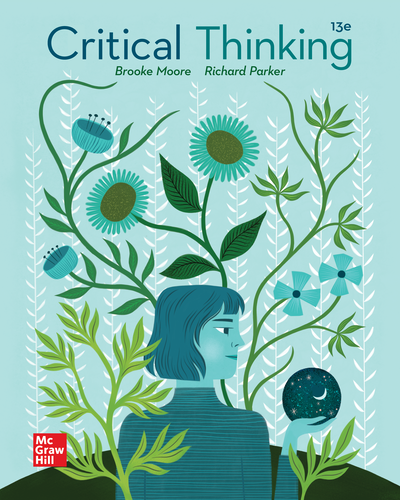
Critical Thinking , 13th Edition
Format options:.
Lowest Price!
- Print from $70.00
- Connect from $95.17
McGraw Hill eBook
- Highlight, take notes, and search
- Download the free ReadAnywhere app for offline and mobile access
Watch to learn more about the eBook
Textbook Rental (150 Days Access)
- Rent for a fraction of the printed textbook price
- Complete text bound in hardcover or softcover
Loose-Leaf Purchase
Unbound loose-leaf version of full text
Shipping Options
- Next-day air
- 2nd-day air
Orders within the United States are shipped via FedEx or UPS Ground. For shipments to locations outside of the U.S., only standard shipping is available. All shipping options assume the product is available and that processing an order takes 24 to 48 hours prior to shipping.
Note: Connect can only be used if assigned by your instructor.
Connect (180 Days Access)
- Digital access to a comprehensive online learning platform
- Includes homework , study tools , eBook, and adaptive assignments
- Download the free ReadAnywhere app to access the eBook offline
Connect + Loose-Leaf
- Comprehensive online learning platform + unbound loose-leaf print text package
- Connect includes homework , study tools, eBook, and adaptive assignments
* The estimated amount of time this product will be on the market is based on a number of factors, including faculty input to instructional design and the prior revision cycle and updates to academic research-which typically results in a revision cycle ranging from every two to four years for this product. Pricing subject to change at any time.
Instructor Information
Quick Actions ( Only for Validated Instructor Accounts ):
- Table of Contents
- Digital Platform
- Author Bios
- Accessibility
Affordability
In this new edition the authors have expanded on how to improve information acquisitions skills and recognize dubious claims, gravely important in this current climate of “fake news.” In addition, they have revised and expanded the distinction between subjective judgments and objective claims and revamped their explanation of inductive reasoning into four different types, introducing them in chapter 2 and further explaining them in chapter 11. This book is not about critical thinking as much as it is a book in critical thinking. The authors work to provide guided practice in what they and instructors think are the most important critical thinking skill sets for students.
Main Features
- LMS Integration
- Print/Loose-Leaf Book Add-On Availability
- Presentation Slides & Instructor Resources
- Question & Test Banks
- Adaptive Assignments
- Student Progress Reporting & Analytics
- Essay Prompts
- Prebuilt Courses
- Interactive Exercises
- eBook Access (ReadAnywhere App)
- Remote Proctoring (Proctorio)
- Subject-Specific Tools
About the Author
Brooke Noel Moore
Brooke Moore is a professor of philosophy at California State University, Chico, where he serves as Coordinator of the Critical Thinking Program. A former chair of the Philosophy and History departments, Moore was the University Outstanding Professor in 1996. He has served as a university Master Teacher and has coordinated the university’s program for mentoring new faculty. His publications include The Power of Ideas (with Kenneth Bruder), The Cosmos, God, and Philosophy (with Ralph J. Moore), A Comprehensive Introduction to Moral Philosophy (with Robert Stewart), and other works.
Richard Parker
Richard Parker is Professor Emeritus of philosophy at California State University, Chico. He has been three times chair of the university's Faculty Senate, Dean of Undergraduate Education, and Executive Assistant to the President and has received Professional Achievement Honors for his academic work. He has published in analytic philosophy, critical thinking, and philosophy of law, and his views on punishment and responsibility have been included in major anthologies. Outside academia, Parker is a semiprofessional flamenco guitarist, performing with dancers around and about northern California; he rides a Harley-Davidson motorcycle, plays golf for fun and pool for money, and spends as much time as possible in southern Spain.
Creating accessible products is a priority for McGraw Hill. We make accessibility and adhering to WCAG AA guidelines a part of our day-to-day development efforts and product roadmaps.
For more information, visit our accessibility page , or contact us at [email protected]
Reduce course material costs for your students while still providing full access to everything they need to be successful. It isn't too good to be true - it's Inclusive Access.
Need support? We're here to help - Get real-world support and resources every step of the way.
Company Info
- Contact & Locations
- Diversity, Equity & Inclusion
- Social Responsibility
- Investor Relations
- Social Media Directory
- Place an Order
- Get Support
- Contact Customer Service
- Contact Sales Rep
- Check System Status
Additional Resources
- Permissions
- Author Support
- International Rights
- Purchase Order
Follow McGraw Hill:
©2024 McGraw Hill. All Rights Reserved.
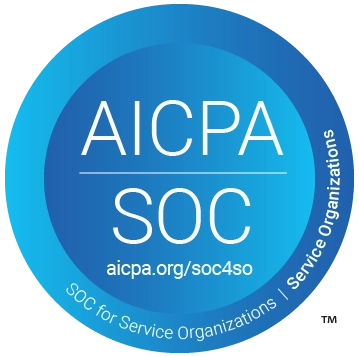

Critical & Creative Thinking - OER & More Resources: Free OER Textbooks
- Self evaluation
- Creating goals
- Creating personal mission statement
- Creative Thinking
Problem Solving
- IDEAL problem solving
- CRITICAL THINKING
- Critical Thinking Tips
- Logic Terms
- Logic Traps
- Free OER Textbooks
- More Thinking: OER
- Ethics - OER Textbooks
- Evidence-Based Critical Thinking
- BELIEFS & BIAS
- Limits of Perception
- Reality & Assumptions
- Stereotypes & Race
- MAKING YOUR CASE
- Argument (OER)
- Inductive Arguments
- Information Literacy: Be Savvy about your Sources
- Persuasive Speaking (OER)
- Philosophy & Thinking
- WiPhi Philosophy Project
- Browse All Guides
An Introduction To Reasoning (CC BY-NC-SA license)
- Brief Contents: An Introduction To Reasoning
- Google Book: An Introduction To Reasoning
Detailed Contents (with links to Parts and Chapters)
Preface & Notes Preface
Notes & Bibliography
Real-World Reasoning (RW) Introduction
Classifying 1 (flag words; reasoning vs. non-reasoning)
Classifying 2 (justifying belief vs. explaining; inferring vs. arguing)
Analyzing 1 (propositions; conjunctions)
Analyzing 2 (standard form; rewriting sentences; things to omit)
Reasoning Substitutes (various ways not to reason, or to short-circuit reason-giving, by claiming the reasons are obvious, pointing imprecisely at reasons, shifting the burden of proof, appealing to ignorance, abusing flag words, begging the question)
Problems With Meaning – (imprecise language, euphemism, metaphor, vagueness, weasel words, ambiguity)
Two Criteria Of Evaluation – (soundness; valid-strong-weak; ignoring confidence indicators)
Everyday Inferences – Sources, Character, Motives (sources, character, motives: argument from authority; various ad hominems)
Everyday Inferences – Emotional Reasons For Practical Conclusions (Decision-making)
Everyday Inferences – Reasoning With Properties, Parts, & Relations (Identity/difference, part-whole, symmetricality, chain (with relations), transitivity)
Everyday Inferences – Reasoning With Classes & Propositions (chain (with classes), instantiation, affirming the antecedent, chain (with propositions), elimination)
Warrants – (Adding warrants/missing premises, sincerity & charity)
Diagramming - Basic (Standard form and diagramming of single-target reasoning)
Diagramming - Complex (Multiple targets, either from a single set of reasons or in sequence)
Diagramming - Dialogue (Objections, objections to objections, support for objections)
Diagramming - Very Long Passages
Propositional & Categorical Reasoning (P&C) Validity & Non-Validity (Note: there is a section on valid-strong-weak (and soundness) in RW's Two Criteria)
Logical Structure Of Propositions (Negations, Conjunctions, Disjunctions, Conditionals)
Necessary & Sufficient Conditions
Big 8 Method (Single-step derivation using 8 basic rules)
Method Of Derivation (Multi-step derivation)
Truth Tables & Truth Trees Categorical Reasoning (Very rudimentary introduction)
Inductive & Scientific Reasoning (I&S) Valid, Strong, Weak (Note: there's a separate section on valid-not valid in P&C, and a quick section on valid-strong-weak and soundness in RW's Basic Evaluation.)
Causation, Causal Explanation & Causal Inferences (Causation & Causal Explanation, Inference to a Cause, Inference to an Effect)
Analogy & Inference To The Best Explanation (Hypothesis development when at a loss)
Experimental Methods (Controlled, Randomized, Prospective, Retrospective, Natural)
Mill's Methods
Induction (Generalization, Instantiation and Induction to a Particular)
Problems In Induction (Problem of Induction, New Riddle of Induction, Lottery Paradox. Philosophical appendix - No Exercises.)
Association Diagrams & Cross-Tabulations (Association, Cross-Tabulations, Present-Present Fallacy)
Explanation-Building (including INUS Conditions)
Introduction to Logic and Critical Thinking (CC by Attribution - most open license)
- Introduction to Logic and Critical Thinking (open.umn.edu/opentextbooks)
Chapter 1: Reconstructing and analyzing arguments
1.1 What is an argument?
1.2 Identifying arguments
1.3 Arguments vs. explanations
1.4 More complex argument structures
1.5 Using your own paraphrases of premises and conclusions to reconstruct arguments in standard form
1.6 Validity
1.7 Soundness
1.8 Deductive vs. inductive arguments
1.9 Arguments with missing premises
1.10 Assuring, guarding, and discounting
1.11 Evaluative language
1.12 Evaluating a real-life argument
Chapter 2: Formal methods of evaluating arguments
2.1 What is a formal method of evaluation and why do we need them?
2.2 Propositional logic and the four basic truth functional connectives
2.3 Negation and disjunction
2.4 Using parentheses to translate complex sentences
2.5 “Not both” and “neither nor”
2.6 The truth table test of validity
2.7 Conditionals
2.8 “Unless”
2.9 Material equivalence
2.10 Tautologies, contradictions, and contingent statements
2.11 Proofs and the 8 valid forms of inference
2.12 How to construct proofs
2.13 Short review of propositional logic
2.14 Categorical logic
2.15 The Venn test of validity for immediate categorical inferences
2.16 Universal statements and existential commitment
2.17 Venn validity for categorical syllogisms
Chapter 3: Evaluating inductive arguments and probabilistic and statistical fallacies
3.1 Inductive arguments and statistical generalizations
3.2 Inference to the best explanation and the seven explanatory virtues
3.3 Analogical arguments
3.4 Causal arguments
3.5 Probability
3.6 The conjunction fallacy
3.7 The base rate fallacy
3.8 The small numbers fallacy
3.9 Regression to the mean fallacy
3.10 Gambler’s fallacy
Chapter 4: Informal fallacies
4.1 Formal vs. informal fallacies
4.1.1 Composition fallacy
4.1.2 Division fallacy
4.1.3 Begging the question fallacy
4.1.4 False dichotomy
4.1.5 Equivocation
4.2 Slippery slope fallacies
4.2.1 Conceptual slippery slope
4.2.2 Causal slippery slope
4.3 Fallacies of relevance
4.3.1 Ad hominem
4.3.2 Straw man
4.3.3 Tu quoque
4.3.4 Genetic
4.3.5 Appeal to consequences
4.3.6 Appeal to authority
An Introduction to Philosophy (Creative Commons Attribution-NonCommercial-NoDerivs 3.0 Unported License.)
- An Introduction to Philosophy (qcc.cuny.edu)
How to Read this Text
Chapter 1 Introduction
Chapter 2 The Greeks: The Origins of Philosophy in the West
Chapter 3 Philosophy of Religion and the Problem of God
Chapter 4 Metaphysics
Chapter 5 Epistemology
Chapter 6 The Mind- Body Problem
Chapter 7 Freedom and Determinism
Chapter 8 Ethics
Chapter 9 Social Philosophy
Chapter 10 Political Philosophy
Chapter 11 Philosophy of Art and Aesthetics
Chapter 12 Conclusion
Written Assignments
Discussion Topics
Bibliography
Links to Philosophy Reference Works and Sites

Problem Solving (lumenlearning.com)
Cognition Topics
History of Cognition
Classification and Categorization
Executive Function and Control
Reasoning and Inference
Decision Making
Social Cognition
Two more for consideration:
- Introduction to Logic and Critical Thinking Version 1.4 (Lansing Community College)
- Public Speaking
Critical Thinking & Reasoning: Introduction
Critical Thinking & Reasoning: Critical Thinking
Critical Thinking and Reasoning: Logic and the Role of Arguments
Critical Thinking & Reasoning: Understanding Fallacies
Critical Thinking and Reasoning: Formal Fallacies
Critical Thinking & Listening: Informal Fallacies
Critical Thinking & Reasoning: Conclusion
- << Previous: Logic Traps
- Next: More Thinking: OER >>
- Last Updated: Mar 13, 2024 3:04 PM
- URL: https://library.fvtc.edu/Thinking
About Us • Contact Us • FVTC Terms of Service • Sitemap FVTC Privacy Statement • FVTC Library Services Accessibility Statement DISCLAIMER: Any commercial mentions on our website are for instructional purposes only. Our guides are not a substitute for professional legal or medical advice. Fox Valley Technical College • Library Services • 1825 N. Bluemound Drive • Room G113 Appleton, WI 54912-2277 • United States • (920) 735-5653 © 2024 • Fox Valley Technical College • All Rights Reserved.
The https://library.fvtc.edu/ pages are hosted by SpringShare. Springshare Privacy Policy.
Critical thinking definition

Critical thinking, as described by Oxford Languages, is the objective analysis and evaluation of an issue in order to form a judgement.
Active and skillful approach, evaluation, assessment, synthesis, and/or evaluation of information obtained from, or made by, observation, knowledge, reflection, acumen or conversation, as a guide to belief and action, requires the critical thinking process, which is why it's often used in education and academics.
Some even may view it as a backbone of modern thought.
However, it's a skill, and skills must be trained and encouraged to be used at its full potential.
People turn up to various approaches in improving their critical thinking, like:
- Developing technical and problem-solving skills
- Engaging in more active listening
- Actively questioning their assumptions and beliefs
- Seeking out more diversity of thought
- Opening up their curiosity in an intellectual way etc.
Is critical thinking useful in writing?
Critical thinking can help in planning your paper and making it more concise, but it's not obvious at first. We carefully pinpointed some the questions you should ask yourself when boosting critical thinking in writing:
- What information should be included?
- Which information resources should the author look to?
- What degree of technical knowledge should the report assume its audience has?
- What is the most effective way to show information?
- How should the report be organized?
- How should it be designed?
- What tone and level of language difficulty should the document have?
Usage of critical thinking comes down not only to the outline of your paper, it also begs the question: How can we use critical thinking solving problems in our writing's topic?
Let's say, you have a Powerpoint on how critical thinking can reduce poverty in the United States. You'll primarily have to define critical thinking for the viewers, as well as use a lot of critical thinking questions and synonyms to get them to be familiar with your methods and start the thinking process behind it.
Are there any services that can help me use more critical thinking?
We understand that it's difficult to learn how to use critical thinking more effectively in just one article, but our service is here to help.
We are a team specializing in writing essays and other assignments for college students and all other types of customers who need a helping hand in its making. We cover a great range of topics, offer perfect quality work, always deliver on time and aim to leave our customers completely satisfied with what they ordered.
The ordering process is fully online, and it goes as follows:
- Select the topic and the deadline of your essay.
- Provide us with any details, requirements, statements that should be emphasized or particular parts of the essay writing process you struggle with.
- Leave the email address, where your completed order will be sent to.
- Select your prefered payment type, sit back and relax!
With lots of experience on the market, professionally degreed essay writers , online 24/7 customer support and incredibly low prices, you won't find a service offering a better deal than ours.
Critical Thinking | 2nd Edition
About this product.
CRITICAL THINKING: A USER'S MANUAL offers an innovative skill-based approach to critical thinking that provides step-by-step tools for learning to evaluate arguments. Students build a complete skill set by recognizing, analyzing, diagramming, and evaluating arguments. Later chapters encourage application of the basic skills to categorical, truth-functional, analogical and inductive, and causal arguments as well as fallacies. Clear, conversational, step-by-step explanations and workbook-style features make complex course material manageable and accessible.Multiple opportunities for practice in a variety of formats ensure that students apply what they have learned, regardless of their dominant learning style. The quantity and variety of exercises allow for group work, reflection and application, and writing practice as well as traditional homework exercises. The exercises also engage readers in active learning, integrate writing as part of the critical thinking process, and emphasize skill transference.

Start Here!
- For College and University Faculty
- For College and University Students
- For High School Teachers
- For Jr. High School Teachers
- For Elementary Teachers (Grades 4-6)
- For Elementary Teachers (Kindergarten - 3rd Grade)
- For Science and Engineering Instruction
- For Business and Professional Development For Nursing and Health Care
- For Home Schooling and Home Study
Thinker's Guide Series
Set of twenty one thinker's guides, set of twenty-two thinker's guides.

Liberating the Mind: Overcoming Sociocentric Thought and Egocentric Tendencies
Dissecting the core of how humans naturally learn, think, and choose to act, internationally-recognized critical thinking leader Linda Elder illuminates root causes of dysfunctional thought and shows us how to free ourselves from both selfishness and groupthink through explicit tools of rationality.
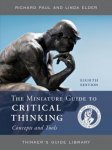
The Miniature Guide to Critical Thinking Concepts & Tools
Normal 0 false false false EN-US JA X-NONE
This miniature guide, which has sold more than half a million copies, is widely used in teaching and learning, in personal and professional life. It distills the essence of critical thinking into a 24-page, pocket-sized guide. It introduces the interrelated complex of critical thinking concepts and principles implicit in the works of Richard Paul and Linda Elder. This guide is widely used at the college level. It can be used as a critical thinking supplement to any textbook or course.
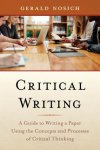
Critical Writing: A Guide to Writing a Paper Using the Concepts and Processes of Critical Thinking
The main goal of Critical Writing is to provide students with a set of robust, integrated critical concepts and processes that will allow to them think through and write about a topic in a way that is built on — and permeated by — substantive critical thinking.

Fact over Fake: A Critical Thinker's Guide to Media Bias and Political Propaganda
The Critical Thinker’s Guide to Bias, Lies, and Politics in the News reveals the power of critical thinking to make sense of overwhelming and often subjective media by detecting ideology, slant, and spin at work.

Student Guide to Historical Thinking: Going Beyond Dates, Places, and Names to the Core of History
The purpose of this guide is to help you begin to understand history as a way of thinking, as a system of understandings. History is not a list of dates, names, and events to store up in your memory. It is a catalog of stories told about the past that, when told and understood insightfully and deeply, can help us live better in the future.

Instructor's Guide to Historical Thinking
This guide is designed principally for instructors. It is also useful for those interested in a serious study of history. It presents history as a mode of thinking rather than a list of disconnected dates and names and places. We recommend that it be used in conjunction with the student guide : Understanding Critical Thinking as the Key to Historical Thinking .

The Thinker's Guide to Analytic Thinking: How to Take Thinking Apart and What to Look for When You Do
This guide focuses on the intellectual skills that enable one to analyze anything one might think about - questions, problems, disciplines, subjects, etc. It provides the common denominator between all forms of analysis.

The Aspiring Thinker's Guide to Critical Thinking
This Thinker's Guide was created specifically for the aspiring young learner, however the content and approach are applicable to students and people of all ages. This guide introduces critical thinking concepts and provides strategies for developing one's own critical thinking process. Its full color images and glossy format help capture the attention of the teenage or pre-teen student while focusing on the essence of critical thinking as it applies to today's world. The skills implicit in this guide apply to all subjects. Teachers can use it to design instruction, assignments and tests in any subject. Students can use it to improve their learning in any content area.
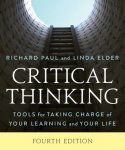
Critical Thinking: Tools for Taking Charge of Your Learning & Your Life - 4th Edition
Written by two of the most prominent leaders in the International Critical Thinking movement, Richard Paul and Linda Elder, this is the text that will give students the tools they need to achieve deep and significant learning in all disciplines and subjects, as well as in life. It is also a useful book for anyone interested in developing as thinker.

30 Days to Better Thinking and Better Living with Critical Thinking
Critical thinking is at once simple and complex. Though there are many layers to critical thinking, and you can always deepen your understanding of it, there are some basic ideas in critical thinking that, if taken seriously, can almost immediately improve the quality of your life. This book offers 30 such ideas. You can focus on one idea per day or one idea per week. And each idea is immediately applicable to your life. This book is for anyone interested in improving the quality of their lives by improving the quality of their thinking.

Learning to Think Things Through: A Guide to Critical Thinking Across the Curriculum
Built on Richard Paul's model of critical thinking, Learning to Think Things Through, was written to help students engage in critical thinking within the discipline or subject matter they are studying.
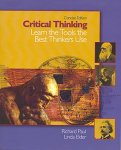
Learn the Tools the Best Thinkers Use - Concise Edition
Like its parent text, Critical Thinking: Tools for Taking Charge of Your Learning and Your Life, Second Edition, this book focuses on an integrated, universal concept of critical thinking that is both substantive and practical; it provides reader with the basic intellectual skills they need to think through content in any class, subject, discipline, and through any problems or issues they face.

A Guide for Educators to Critical Thinking Competency Standards: Standards, Principles, Performance Indicators, and Outcomes with a Critical Thinking Master Rubric
The critical thinking competency standards articulated in this guide serve as a resource for teachers, curriculum designers, administrators and accrediting bodies. The use of these competencies across the curriculum will ensure that critical thinking is fostered in the teaching of any subject to all students at every grade level. This guide provides a framework for assessing students’ critical thinking abilities. It enables administrators, teachers, and faculty at all levels to determine the extent to which students are reasoning critically within any subject or discipline.

Critical Thinking: What Every Person Needs To Survive in a Rapidly Changing World
In this anthology of his major papers, Richard Paul explains how to help students become intellectually fit, how to build the intellectual muscle to overcome inherent self-deceptive tendencies and rise to the challenges of a rapidly changing world.
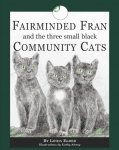
Fairminded Fran and the Three Small Black Community Cats
This is the story of Fairminded Fran and her experience in learning about community cats.

How to Read a Paragraph: The Art of Close Reading
This guide provides theory and activities necessary for deep comprehension. Imminently practical for students.

The Thinker's Guide to Fallacies: The Art of Mental Trickery
An original approach to the identification of fallacies focusing on their relationship to human self-deception, mental trickery, and manipulation. Introduces the concept of fallacies and details 44 foul ways to win an argument.
How to Login to your account
Testimonials about the foundation.
85 Tricky Riddles for Adults That Will Really Test Your Knowledge
These brain-teasers range from super easy to downright mind-boggling.

We've got plenty of clever, hard and downright mind-boggling brain-teasers for you to solve. But if you're looking for something a little easier, we also got a ton of kid-friendly riddles you can figure with your children. There are also plenty of math riddles , too, which will come in handy as icebreakers during work meetings, in the classroom or at a party.
And don't think we just left you hanging with these questions. All of the answers to the mysteries are included.
Be sure to let us know which was your favorite in the comments below!
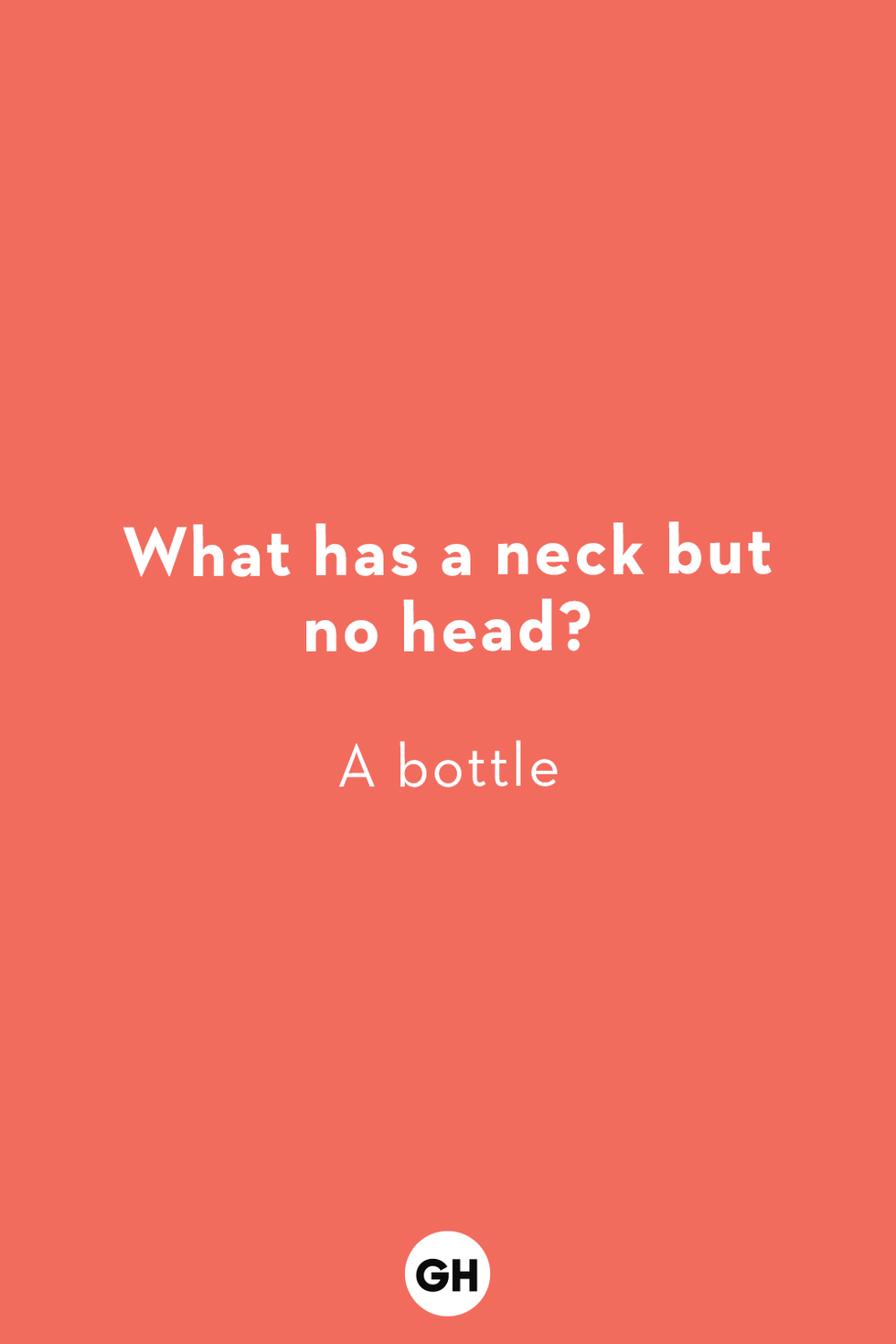
Easy Riddles
Q: What 5-letter word typed in all capital letters can be read the same upside down?
Q: The more you take, the more you leave behind. What am I?
A: Footsteps.
Q:David's father has three sons: Snap, Crackle, and _____?
Q: What is more useful when it is broken?
Q: I am easy to lift, but hard to throw. What am I?
A: A feather.
Q: Where do you take a sick boat?
A: To the dock-tor.
Q: Which fish costs the most?
A: A goldfish.
Q: What goes up, but never comes down?
Q: A cowboy rode into town on Friday. He stayed for three nights and rode out on Friday. How is this possible?
A: His horse's name is Friday.
Q: What has a neck but no head?
A: A bottle
Q: What is full of holes but still holds water?
A: A sponge
Q: How do you spell COW in thirteen letters?
A: SEE O DOUBLE YOU.
Q: Why is Europe like a frying pan?
A: Because it has Greece at the bottom.
Math Riddles

Q: If 2 is company and 3 is a crowd, what are 4 and 5?
Q: I add 5 to 9 and get 2. The answer is correct, so what am I?
A: A clock. When it is 9 a.m., adding 5 hours would make it 2 p.m.
Q: Rachel goes to the supermarket and buys 10 tomatoes. Unfortunately, on the way back home, all but 9 get ruined. How many tomatoes are left in a good condition?
Q: What is 3/7 chicken, 2/3 cat, and 2/4 goat?
A: Chicago!
Q: If a zookeeper had 100 pairs of animals in her zoo, and two pairs of babies are born for each one of the original animals, then (sadly) 23 animals don’t survive, how many animals do you have left in total?
A: 977 animals (100 x 2 = 200; 200 + 800 = 1000; 1000 – 23 = 977)
Q: I saw my math teacher with a piece of graph paper yesterday.
A: I think he must be plotting something.
Q: If you multiply this number by any other number, the answer will always be the same. What number is this?
Q: I am an odd number. Take away a letter and I become even. What number am I?
Q: What 3 numbers give the same result when multiplied and added together?
A: 1, 2, and 3 (1 + 2 + 3 = 6 and 1 x 2 x 3 = 6).
Q: What's a single-digit number with no value?
Q: A tree doubled in height each year until it reached its maximum height over the course of ten years. How many years did it take for the tree to reach half its maximum height?
A: Nine years.
Funny Riddles
Q: How can you drop a raw egg from a height onto a concrete floor without cracking it?
A: Concrete floors are very hard to crack.
Q: Pronounced as 1 letter, And written with 3, 2 letters there are, and 2 only in me. I’m double, I’m single, I’m black blue, and gray, I’m read from both ends, and the same either way. What am I?
Q: Who has married many women but was never married?
A: The priest
Q: Forward, I am heavy; backward, I am not. What am I?
Q: What can you hold in your right hand, but never in your left hand?
A: Your left hand.
Q: If two snakes marry, what will their towels say?
A: Hiss and hers
Q: What does a man do only once in his lifetime, but women do once a year after they are 29?
Hard Riddles

Q: Four cars come to a four-way stop, each coming from a different direction. They can’t decide who got there first, so they all go forward at the same time. All 4 cars go, but none crash into each other. How is this possible?
A: They all made right-hand turns.
Q: I have a head like a cat and feet like a cat, but I am not a cat. What am I?
A: A kitten.
Q: Who makes it, has no need of it. Who buys it, has no use for it. Who uses it can neither see nor feel it. What is it?
A: A coffin.
Q: What has hands but cannot clap?
A: A clock.
Q: Paul's height is six feet, he's an assistant at a butcher's shop, and wears size 9 shoes. What does he weigh?
Q: What gets broken without being held?
A: A promise.
Q: Poor people have it. Rich people need it. If you eat it you die. What is it?
A: Nothing.
Q: What is the longest word in the dictionary?
A: Smiles, because there is a mile between each ‘s’.
Q: Throw away the outside and cook the inside, then eat the outside and throw away the inside. What is it?
A: Corn on the cob.
Q: What is at the end of a rainbow?
A: The letter W!
Q: What kind of tree can you carry in your hand?
Q: They come out at night without being called, and are lost in the day without being stolen. What are they?
Q: What is always in front of you, but can’t be seen?
A: The future.
Q: You’ll find me in Mercury, Earth, Mars, Jupiter, Saturn, and Uranus. But never Neptune, or Venus. What am I?
A: The letter “R”.
Q: How many months have 28 days?
A: Every month has 28 days.
Q: I can be cracked, made, told, and played. What am I?
Q: I cannot talk, but I always reply when spoken to. What am I?
A: An echo.
Q: When is the top of a mountain similar to a savings account?
A: When it peaks one’s interest.
Q: A man goes out for a walk during a storm with nothing to protect him from the rain. He doesn’t have a hat, a hood, or an umbrella. But by the end of his walk, there isn’t a single wet hair on his head. Why doesn’t the man have wet hair?
A: He’s bald.
Q: I love to dance, and twist. I shake my tail as I sail away. When I fly wingless into the sky. What am I?
Q: When you stop to look, you can always see me. But if you try to touch me, you can never feel me. Although you walk towards me, I remain the same distance from you. What am I?
A: The horizon
Q: You see a boat filled with people. It has not sunk. But when you look back, you don’t see a single person on the boat. Why?
A: All the people on board are married.
Q: What is it that no one wants to have, but no one wants to lose either?
A: A lawsuit.
Q: I welcome the day with a show of light, I stealthily came here in the night.I bathe the earthy stuff at dawn, But by noon, alas! I'm gone.
A: The morning dew.
Q: What goes through cities and fields, but never moves?
Q: What can be touched but can't be seen?
A: Someone’s heart.
Q: In a bus, there is a 26-year-old pregnant lady, a 30-year-old policeman, a 52-year-old random woman, and the driver who is 65 years old. Who is the youngest?
A: The baby of the pregnant lady.
Q: When it is alive we sing, when it is dead we clap our hands. What is it?
A: A birthday candle.
Q: What can go through glass without breaking it?
Q: What gets bigger the more you take away?
Q: I have no life, but I can die. What am I?
A: A battery.
Q: What kind of room has no walls, door or windows?
A: A mushroom.
Q: It belongs to you, but your friends use it more. What is it?
A: Your name.
Q: What 2 things can you never eat for breakfast?
A: Lunch and dinner.
Q: I make a loud sound when I’m changing. When I do change, I get bigger but weigh less. What am I?
A: Popcorn.
Q: It has keys, but no locks. It has space, but no room. You can enter, but can’t go inside. What is it?
A: A keyboard.
Q: I’m orange, I wear a green hat and I sound like a parrot. What am I?
A: A carrot.
Q: What runs all around a backyard, yet never moves?
A: A fence.
Q: Take off my skin - I won't cry, but you will! What am I?
A: An onion.
Q: What invention lets you look right through a wall?
A: A window.
Q: What is always on its way but never arrives?
A: Tomorrow.
Q: Two girls were born to the same mother, on the same day, at the same time, in the same month and year, and yet they're not twins. How can this be?
A: The two babies are two of a set of triplets.
Q: What has a bottom at the top?
A: Your legs.
Q: What can you catch but never throw?
Q: What has many teeth but cannot bite?
Q: What has branches, but no fruit, trunk, or leaves?
Q: What thrives when you feed it but dies when you water it?
Q: What do you buy to eat but never consume?
A: Cutlery.
Q: Two fathers and two sons are in a car, yet there are only three people in the car. How?
A: They are grandfather, father, and son.
Q: A bus driver goes the wrong way down a one-way street. He passes the cops, but they don’t stop him. Why?
A: He was walking.
Q: If an electric train is traveling south, then which way is the smoke going?
A: There is no smoke—it's an electric train.
Q: Where is the only place where today comes before yesterday?
A: The dictionary.
Q: What can you put in a bucket to make it weigh less?
Q: How can kids drink beer and not get drunk?
A: By sticking to root beer.
@media(max-width: 64rem){.css-o9j0dn:before{margin-bottom:0.5rem;margin-right:0.625rem;color:#ffffff;width:1.25rem;bottom:-0.2rem;height:1.25rem;content:'_';display:inline-block;position:relative;line-height:1;background-repeat:no-repeat;}.loaded .css-o9j0dn:before{background-image:url(/_assets/design-tokens/goodhousekeeping/static/images/Clover.5c7a1a0.svg);}}@media(min-width: 48rem){.loaded .css-o9j0dn:before{background-image:url(/_assets/design-tokens/goodhousekeeping/static/images/Clover.5c7a1a0.svg);}} Life

'Rock the Block' Fans React to Latest Episode

The 7 Best Calming Treats for Dogs
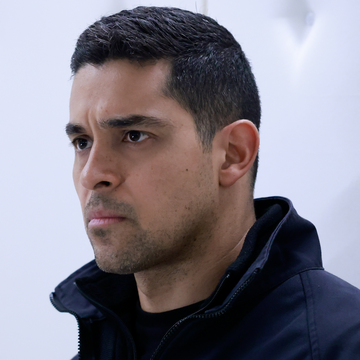
See Wilmer Valderrama's Emotional 'NCIS' Note

See Jenna Bush Hager's Adorable Family Milestone

A Guide on How to Vote for 'American Idol' in 2024
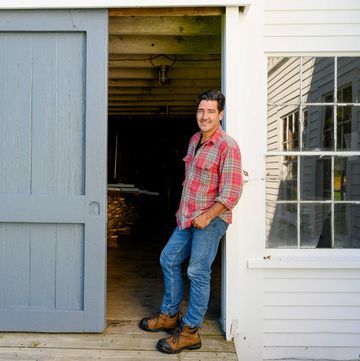
HGTV Fans, Get Ready for 'Farmhouse Fixer'

Am I Wrong For Bailing On My Friend's $8K Wedding?

The Sweetest Bridal Shower Decorations

Walmart Could Owe You Up To $500
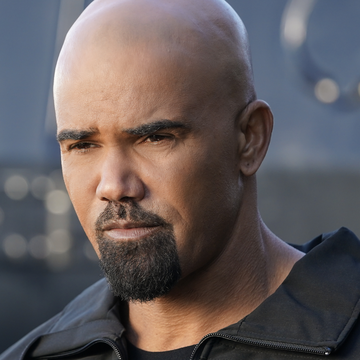
'S.W.A.T.' Star Reveals Shocking Season 8 News
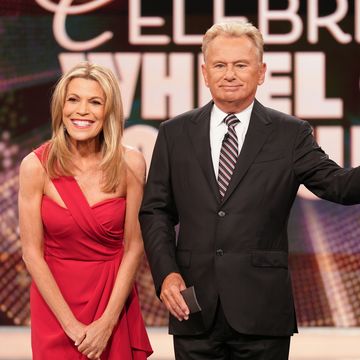
When Is Pat Sajak's Final 'WoF' Episode?

IMAGES
VIDEO
COMMENTS
This is an introductory textbook in logic and critical thinking. The goal of the textbook is to provide the reader with a set of tools and skills that will enable them to identify and evaluate arguments. The book is intended for an introductory course that covers both formal and informal logic. As such, it is not a formal logic textbook, but is closer to what one would find marketed as a ...
Suggest an edit to this book record. Critical Thinking in Academic Research - 2nd Edition provides examples and easy-to-understand explanations to equip students with the skills to develop research questions, evaluate and choose the right sources, search for information, and understand arguments. This 2nd Edition includes new content based on ...
Over time, attitudes, evidence, and opinions change, and as a critical thinker, you must continue to research, synthesize newly discovered evidence, and adapt to that new information. Figure 7.11 Information, attitudes, laws, and acceptance of smoking changed dramatically over time. More recently, vaping and related practices have rekindled ...
Arguments in Context is a comprehensive introduction to critical thinking that covers all the basics in student-friendly language. Intended for use in a semester-long course, the text features classroom-tested examples and exercises that have been chosen to emphasize the relevance and applicability of the subject to everyday life. Three themes are developed as the text proceeds from argument ...
So to engage in critical thinking is to engage in self-critical, self-reflective, self-aware thinking and reasoning—thinking and reasoning aimed at self-improvement, at truth, and at careful, deliberate, proper patterns of reasoning. There are many definitions of what critical thinking is, but here're my thoughts: As you can see, being a ...
A valuable guide on creativity and critical thinking to improve reasoning and decision-making skills Critical thinking skills are essential in virtually any field of study or practice where individuals need to communicate ideas, make decisions, and analyze and solve problems. An Introduction to Critical Thinking and Creativity: Think More, Think Better outlines the necessary tools for readers ...
A thoroughly updated introduction to the concepts, methods, and standards of critical thinking, A Practical Guide to Critical Thinking: Deciding What to Do and Believe, Second Edition is a unique presentation of the formal strategies used when thinking through reasons and arguments in many areas of expertise. Pursuing an interdisciplinary approach to critical thinking, the book offers a broad ...
A practical introduction to critical thinking across various disciplines Knowing how to think critically about what to believe and what to do is essential for success in both academic and professional environments. A Practical Guide to Critical Thinking introduces readers to the concepts, methods, and standards for thinking critically about reasons and arguments in virtually any area of practice.
This book is not about critical thinking as much as it is a book in critical thinking. The authors work to provide guided practice in what they and instructors think are the most important critical thinking skill sets for students. Get the 13th Edition of Critical Thinking by Brooke Noel Moore and Richard Parker Textbook, eBook, and other options.
Critical & Creative Thinking - OER & More Resources: Free OER Textbooks Understanding, for better or worse, starts with entertaining the idea that something is true. The brain tries to make thinking easier by creating heuristics, but sometimes these are inaccurate.
The best books on critical thinking: Table of Contents [ show] 1. Critical Thinking: A Beginner's Guide to Critical Thinking, Better Decision Making, and Problem Solving - Jennifer Wilson. $12.38. Buy on Amazon. 03/08/2024 04:56 pm GMT. As the title says, this book introduces you to the art of critical thinking.
With Critical Thinking: An Online Course, we created an original online course that is inspired by the success of an established SAGE textbook. Tom Chatfield's book Critical Thinking: Your Guide to Effective Argument, Successful Analysis and Independent Studyhas been well received by students and lecturers alike, and is quickly establishing ...
Critical thinking, as described by Oxford Languages, is the objective analysis and evaluation of an issue in order to form a judgement. Active and skillful approach, evaluation, assessment, synthesis, and/or evaluation of information obtained from, or made by, observation, knowledge, reflection, acumen or conversation, as a guide to belief and action, requires the critical thinking process ...
More Info ». $20.00. Critical Thinking: Tools for Taking Charge of Your Professional & Personal Life - Second Edition. You are what you think…. Everything you do in life is determined by the quality of your thinking. If you aren't thinking clearly, you're at the ... More Info ». $45.00. 30 Days to Better Thinking and Better Living with ...
This is an introductory textbook in logic and critical thinking. Both logic and critical thinking centrally involve the analysis and assessment of arguments. "Argument" is a word that has multiple distinct meanings, so it is important to be clear from the start about the sense of the word that is relevant to the study of logic.
For general information on our other products and services or for technical support, please contact our Customer Care Department within the United States at (800) 762-2974, outside the United States at (317) 572-3993 or fax (317) 572-4002. Wiley also publishes its books in a variety of electronic formats. Some content that appears in print may ...
CRITICAL THINKING: A USER'S MANUAL offers an innovative skill-based approach to critical thinking that provides step-by-step tools for learning to evaluate arguments. Students build a complete skill set by recognizing, analyzing, diagramming, and evaluating arguments. Later chapters encourage application of the basic skills to categorical ...
A brilliant, comprehensive 2021 book on critical thinking that, to my mind, hasn't received nearly enough attention. The scientist Grimes dissects bad thinking, shows why it persists, and offers ...
The essence of critical thinking concepts and tools distilled into a 20-page pocket-size guide. It is a critical thinking supplement to any textbook or course. It is best used in conjunction with the Analytic Thinking Guide. Keywords: critical thinking concepts; critical thinking tools; analytic thinking; thinker's guide Created Date
In an era of information overload, our need to learn how to critically evaluate the growing flood of information has never been greater. Critical Reflection showcases the role of reason in a world saturated by media-enhanced persuasion and complex scientific and technological jargon.Drawing from the classic philosophical texts, this engaging textbook on the art of analyzing arguments is also ...
It distills the essence of critical thinking into a 24-page, pocket-sized guide. It introduces the interrelated complex of critical thinking concepts and principles implicit in the works of Richard Paul and Linda Elder. This guide is widely used at the college level. It can be used as a critical thinking supplement to any textbook or course.
avg rating 4.13 — 31,173 ratings — published 2016. Want to Read. Rate this book. 1 of 5 stars 2 of 5 stars 3 of 5 stars 4 of 5 stars 5 of 5 stars. Books shelved as critical-thinking: Asking the Right Questions: A Guide to Critical Thinking by M. Neil Browne, Factfulness: Ten Reasons We're Wrong Abou...
Q: If 2 is company and 3 is a crowd, what are 4 and 5? A: 9. Q: I add 5 to 9 and get 2. The answer is correct, so what am I? A: A clock. When it is 9 a.m., adding 5 hours would make it 2 p.m.